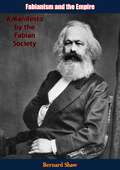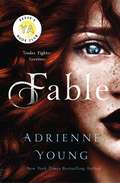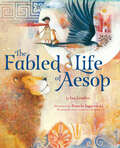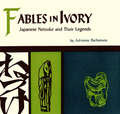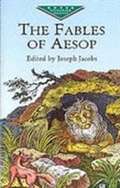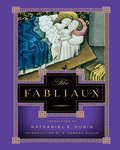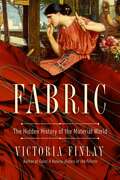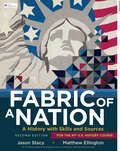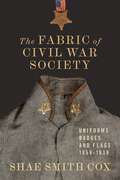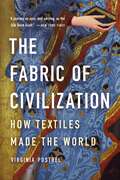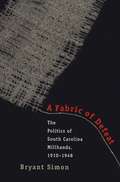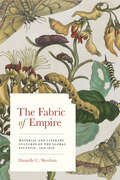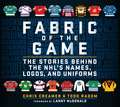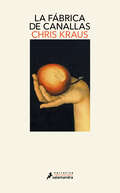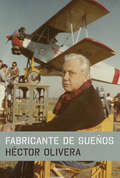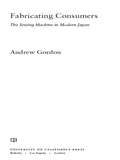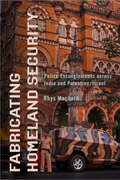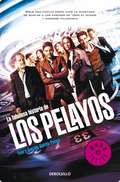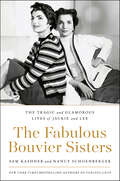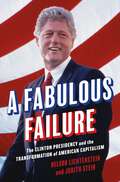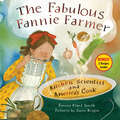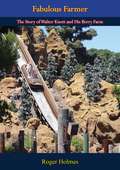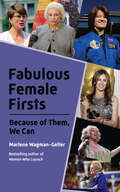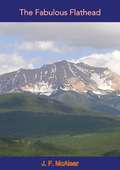- Table View
- List View
Fabianism and the Empire: A Manifesto by the Fabian Society
by Bernard ShawIn 1900 Bernard Shaw completed the difficult task of drafting the Fabian's society position in the manifest Fabianism and the Empire. The society's progressive program advocated for socialist values, social justice and women rights. Against the background of these modern and leftist values though, the society's position on imperialism is somehow astonishing. One of the motives for its supportive stand on imperialism lies in the yet valid division they made between domestic and international politics. Edward Pease's The History of the Fabian society addresses the international system, for example under terms of efficiency and colonialism. According to him 'the only valid moral right to national possession is that the occupier is making adequate use of it for the benefit of the world community.' From the 'International Socialist point of view' national sovereignty and noninterference are not acceptable and the world must strive for an 'international civilization' according to socialist merits. Pease as well as Bernard Shaw in Fabianism and the Empire accept colonialism as a fact and furthermore they illustrate the Great Powers' advance as colonizers 'only [as] a question of time.'... Shaw points out two possible 'imperial policies' of which the second is 'a bureaucratic policy where the majority consists of colored natives.' This illustrates one of the policies the British attempted to implement in Sudan after their conquest of 1899. This paper will analyze various approaches of the British administrative in Sudan, as Indirect Rule and Native Administration. Beyond it, it will address the policy's aims and actual results with which the Sudanese had to cope and which still interfere greatly in the daily reality of Sudan. It will try to draw connection between the actual situation in Sudan, and especially in Darfur, and the colonial legacy of the British policies.
Fable: A Novel (The World of the Narrows #1)
by Adrienne YoungNEW YORK TIMES BESTSELLING SERIES A REESE WITHERSPOON x HELLO SUNSHINE BOOK CLUB YA PICK Filled with all of the action, emotion, and lyrical writing that brought readers to Sky in the Deep, New York Times bestselling author Adrienne Young returns with Fable, the first book in this new captivating duology.Welcome to a world made dangerous by the sea and by those who wish to profit from it. Where a young girl must find her place and her family while trying to survive in a world built for men. As the daughter of the most powerful trader in the Narrows, the sea is the only home seventeen-year-old Fable has ever known. It’s been four years since the night she watched her mother drown during an unforgiving storm. The next day her father abandoned her on a legendary island filled with thieves and little food. To survive she must keep to herself, learn to trust no one and rely on the unique skills her mother taught her. The only thing that keeps her going is the goal of getting off the island, finding her father and demanding her rightful place beside him and his crew. To do so Fable enlists the help of a young trader named West to get her off the island and across the Narrows to her father. But her father’s rivalries and the dangers of his trading enterprise have only multiplied since she last saw him and Fable soon finds that West isn't who he seems. Together, they will have to survive more than the treacherous storms that haunt the Narrows if they're going to stay alive. Fable takes you on a spectacular journey filled with romance, intrigue and adventure.
The Fabled Life of Aesop: The extraordinary journey and collected tales of the world's greatest storyteller
by Ian Lendler★ &“Lovely art comes with unusual perspectives on familiar tales about lions, mice and trickster foxes.&” —Kirkus, starred review &“Many children are familiar with Aesop&’s fables but it is a fair bet that few know much about the storyteller himself…(a) beautiful volume.&” —Wall Street JournalHonoring the path of a slave, this dramatic picture-book biography and concise anthology of Aesop&’s most child-friendly fables tells how a child born into slavery in ancient Greece found a way to speak out against injustice by using the skill and wit of his storytelling—storytelling that has survived for 2,500 years. Stunningly illustrated by two-time Caldecott Honor winner Pamela Zagarenski. The Tortoise and the Hare. The Boy Who Cried Wolf. The Fox and the Crow. Each of Aesop&’s stories has a lesson to tell, but Aesop&’s life story is perhaps the most inspiring tale of them all. Gracefully revealing the genesis of his tales, this story of Aesop shows how fables not only liberated him from captivity but spread wisdom over a millennium. This is the only children&’s book biography about him. Includes thirteen illustrated fables: The Lion and the Mouse, The Goose and the Golden Egg, The Fox and the Crow, Town Mouse and Country Mouse, The Ant and the Grasshopper, The Dog and the Wolf, The Lion and the Statue, The Tortoise and the Hare, The Boy Who Cried Wolf, The North Wind and the Sun, The Fox and the Grapes, The Dog and the Wolf, The Lion and the Boar.
Fables in Ivory
by Adrienne BarbansonTo introduce these miniature sculptures to a wider audience and, at the same time, to tell some of the legends that inspired their creators, Adrienne Barbanson presents here a collection of superb photographs accompanied by a narrative text designed to enhance the reader's appreciation of this remarkable by relatively unfamiliar art.
Fables in Ivory
by Adrienne BarbansonTo introduce these miniature sculptures to a wider audience and, at the same time, to tell some of the legends that inspired their creators, Adrienne Barbanson presents here a collection of superb photographs accompanied by a narrative text designed to enhance the reader's appreciation of this remarkable by relatively unfamiliar art.
The Fables Of Aesop
by Joseph JacobsRich selection of time-honored tales by legendary Greek storyteller offers youngsters valuable lessons and insights into life. Includes "The Fox and the Grapes," "The Old Man and Death," "The Wolf in Sheep's Clothing," "The Town Mouse and the Country Mouse," and dozens more.
The Fabliaux
by Nathaniel E. Dubin R. Howard BlochBawdier than The Canterbury Tales, The Fabliaux is the first major English translation of the most scandalous and irreverent poetry in Western literature. Composed between the twelfth and fourteenth centuries, these virtually unknown erotic and satiric poems lie at the root of the Western comic tradition. Passed down by the anticlerical middle classes of medieval France, The Fabliaux depicts priapic priests, randy wives, and their cuckolded husbands in tales that are shocking even by today's standards. Chaucer and Boccaccio borrowed heavily from these riotous tales, which were the wit of the common man rebelling against the aristocracy and Church in matters of food, money, and sex. Containing 69 poems with a parallel Old French text, The Fabliaux comes to life in a way that has never been done in nearly eight hundred years.
Fabric: The Hidden History of the Material World
by Victoria FinlayA magnificent work of original research that unravels history through textiles and cloth—how we make it, use it, and what it means to us.How is a handmade fabric helping save an ancient forest? Why is a famous fabric pattern from India best known by the name of a Scottish town? How is a Chinese dragon robe a diagram of the whole universe? What is the difference between how the Greek Fates and the Viking Norns used threads to tell our destiny? In Fabric, bestselling author Victoria Finlay spins us round the globe, weaving stories of our relationship with cloth and asking how and why people through the ages have made it, worn it, invented it, and made symbols out of it. And sometimes why they have fought for it. She beats the inner bark of trees into cloth in Papua New Guinea, fails to handspin cotton in Guatemala, visits tweed weavers at their homes in Harris, and has lessons in patchwork-making in Gee's Bend, Alabama - where in the 1930s, deprived of almost everything they owned, a community of women turned quilting into an art form. She began her research just after the deaths of both her parents —and entwined in the threads she found her personal story too. Fabric is not just a material history of our world, but Finlay's own journey through grief and recovery.
Fabric of a Nation: A History with Skills and Sources, For the AP® U.S. History Course
by Jason Stacy Matthew EllingtonThe only AP® U.S. History book that weaves together content, skills, sources, and AP® exam practice is back and better than ever. AP® U.S. History is about so much more than just events on a timeline. The Course Framework is designed to develop crucial reading, reasoning, and writing skills that help students think like historians to interpret the world of the past—and understand how it relates to the world of today. And Fabric of a Nation is still one of the only textbooks that covers every aspect of this course, seamlessly stitching together history skills, sources, and AP® Exam practice. In this new edition, we make it easier than ever to cover all of the skills and topics in the AP® U.S. History Course and Exam Description by aligning our content to the Unit Topics and Historical Reasoning Processes of each Period. An Accessible, Balanced NarrativeThere’s only so much time in a school year. To cover everything and leave enough time for skill development, you need more focused content, not just more content—and to be most effective, skills development should be accessible and placed just where it is needed. Within the narration are AP® Skills Workshops and AP® Working with Evidence features that support students as they learn the history and prepare to take the AP® Exam. Fabric of a Nation delivers a thorough, yet approachable historical narrative that perfectly aligns with all the essential content of the AP® course. An up-to-date historical survey based on current scholarship, this book is also easy to understand and fun to read, with plenty of interesting details and a crisp writing style that keeps things fresh. Perfectly Aligned to the AP® Scope and SequenceFabric of a Nation has an easy-to-use organization that fully aligns with the College Board’s Course and Exam Description for AP® U.S. History. Instead of long, meandering chapters, this book is divided into smaller, approachable modules that pull together content, skills, sources, and AP® Exam practice into brief 1- to 2-day lessons. Each module corresponds with a specific unit topic in the course framework, including the contextualization and reasoning process topics that bookend each time period. This approach takes the guesswork out of when to introduce which skills and how to blend sources with content—all at a manageable pace that mirrors the scope and sequence of the AP® course framework. Seamlessly Integrated AP® Skill Workshops for Thinking and Writing SkillsInspired by the authors’ classroom experience and sound pedagogical principles, the instruction in Fabric of a Nation scaffolds learning throughout the course of the book. Every module offers an opportunity to either learn or practice new skills to prepare for each section of the AP® Exam in an AP® Skills Workshop. As the book progresses, the nature of these workshops moves from focused instruction early on, to guided practice in the middle of the book, and then finally, to independent practice near the end of the year. Fabric of a Nation was designed to provide you and your students everything needed to succeed in the AP® US History course and on the exam. It’s all there. AP® Exam Practice: We Boast the Most MaterialEvery period culminates with AP® Practice questions providing students a mini-AP® exam with approximately 15 stimulus-based multiple-choice questions, 4 short-answer questions, 1 document-based essay question, and 3 long-essay questions. Additionally, a full-length practice exam is included at the end of the textbook. Because the modules in this book are divided into periods that perfectly align to the AP® U.S. History Course and Exam Description, it’s also easy to pair Fabric of a Nation with the resources on AP® Classroom. Each textbook module can be used with the corresponding AP® Daily Videos and Topic Questions while the AP® Exam Practice at the end of each perio
The Fabric of Civil War Society: Uniforms, Badges, and Flags, 1859–1939 (Conflicting Worlds: New Dimensions of the American Civil War)
by Shae Smith CoxMilitary uniforms, badges, flags, and other material objects have been used to represent the identity of Americans throughout history. In The Fabric of Civil War Society, Shae Smith Cox examines the material culture of America’s bloodiest conflict, offering a deeper understanding of the war and its commemoration.Cox’s analysis traces the influence of sewn materials throughout the Civil War and Reconstruction as markers of power and authority for both the Union and the Confederacy. These textiles became cherished objects by the turn of the century, a transition seen in veterans replacing wartime uniforms with new commemorative attire and repatriating Confederate battle flags. Looking specifically at the creation of material culture by various commemoration groups, including the Grand Army of the Republic, the Woman’s Relief Corps, the United Confederate Veterans, and the United Daughters of the Confederacy, Cox reveals the ways that American society largely accepted their messages, furthering the mission of their memory work.Through the lens of material culture, Cox sheds new light on a variety of Civil War topics, including preparation for war, nuances in relationships between Native American and African American soldiers, the roles of women, and the rise of postwar memorial societies.
The Fabric of Civilization: How Textiles Made the World
by Virginia PostrelFrom Paleolithic flax to 3D knitting, explore the global history of textiles and the world they weave together in this enthralling and educational guide.The story of humanity is the story of textiles -- as old as civilization itself. Since the first thread was spun, the need for textiles has driven technology, business, politics, and culture.In The Fabric of Civilization, Virginia Postrel synthesizes groundbreaking research from archaeology, economics, and science to reveal a surprising history. From Minoans exporting wool colored with precious purple dye to Egypt, to Romans arrayed in costly Chinese silk, the cloth trade paved the crossroads of the ancient world. Textiles funded the Renaissance and the Mughal Empire; they gave us banks and bookkeeping, Michelangelo's David and the Taj Mahal. The cloth business spread the alphabet and arithmetic, propelled chemical research, and taught people to think in binary code.Assiduously researched and deftly narrated, The Fabric of Civilization tells the story of the world's most influential commodity.
A Fabric of Defeat
by Bryant SimonIn this book, Bryant Simon brings to life the politics of white South Carolina millhands during the first half of the twentieth century. His revealing and moving account explores how this group of southern laborers thought about and participated in politics and public power. Taking a broad view of politics, Simon looks at laborers as they engaged in political activity in many venues--at the polling station, on front porches, and on the shop floor--and examines their political involvement at the local, state, and national levels. He describes the campaign styles and rhetoric of such politicians as Coleman Blease and Olin Johnston (himself a former millhand), who eagerly sought the workers' votes. He draws a detailed picture of mill workers casting ballots, carrying placards, marching on the state capital, writing to lawmakers, and picketing factories. These millhands' politics reflected their public and private thoughts about whiteness and blackness,war and the New Deal, democracy and justice, gender and sexuality, class relations and consumption. Ultimately, the people depicted here are neither romanticized nor dismissed as the stereotypically racist and uneducated "rednecks" found in many accounts of southern politics. Southern workers understood the political and social forces that shaped their lives, argues Simon, and they developedcomplex political strategies to deal with those forces.
The Fabric of Empire: Material and Literary Cultures of the Global Atlantic, 1650-1850 (Studies in Early American Economy and Society from the Library Company of Philadelphia)
by Danielle C. SkeehanRevealing the entangled lives of texts and textiles in the early modern Atlantic world."Textiles are the books that the colony was not able to burn."—Asociación Femenina para el Desarrollo de Sacatepéquez (AFEDES)A history of the book in the Americas, across deep time, would reveal the origins of a literary tradition woven rather than written. It is in what Danielle Skeehan calls material texts that a people's history and culture is preserved, in their embroidery, their needlework, and their woven cloth. In defining textiles as a form of cultural writing, The Fabric of Empire challenges long-held ideas about authorship, textuality, and the making of books. It is impossible to separate text from textiles in the early modern Atlantic: novels, newspapers, broadsides, and pamphlets were printed on paper made from household rags. Yet the untethering of text from textile served a colonial agenda to define authorship as reflected in ink and paper and the pen as an instrument wielded by learned men and women. Skeehan explains that the colonial definition of the book, and what constituted writing and authorship, left colonial regimes blind to nonalphabetic forms of media that preserved cultural knowledge, history, and lived experience. This book shifts how we look at cultural objects such as books and fabric and provides a material and literary history of resistance among the globally dispossessed.Each chapter examines the manufacture and global circulation of a particular type of cloth alongside the complex print networks that ensured the circulation of these textiles, promoted their production, petitioned for or served to curtail the rights of textile workers, facilitated the exchange of textiles for human lives, and were, in turn, printed and written on surfaces manufactured from broken-down linen and cotton fibers. Bringing together methods and materials traditionally belonging to literary studies, book history, and material culture studies, The Fabric of Empire provides a new model for thinking about the different media, languages, literacies, and textualities in the early Atlantic world.
Fabric of the Game: The Stories Behind the NHL's Names, Logos, and Uniforms
by Chris Creamer Todd RadomAn in-depth look into the origins of how each NHL team was named, received their logo and design, with interviews by those responsible. Written by those most knowledgeable, you'll learn why every hockey team to every play in the National Hockey League looks the way it does. Nothing unites or divides a random assortment of strangers quite like the hockey team for which they cheer. The passion they hold within them for the New York Rangers, Toronto Maple Leafs, Montreal Canadiens, or Boston Bruins allows them to look past any differences which would have otherwise disrupted a perfectly fine Thanksgiving dinner and channels it into a powerful, shared admiration for their team. We decorate our lives with their logos, stock our wardrobe with their jerseys, and, in some cases, even tattoo our bodies with their iconography and colors. They&’re so ingrained in our lives we don&’t even think to ask ourselves why Los Angeles celebrates royalty; why Buffalo cheers for not one, but two massive cavalry swords; or why the Broadway Blueshirts named themselves for a law enforcement agency in Texas (or why they even wear blue shirts, for that matter). All that and more is explored in Fabric of the Game, authored by two of the sports world&’s leading experts in team branding and design: Chris Creamer and Todd Radom. Tapping into their vast knowledge of the whys and hows, Creamer and Radom explore and share the origin stories behind these and more, talking directly to those involved in the decision processes and designs of the National Hockey League&’s team names, logos, and uniforms, pouring through historical accounts to find and deliver the answers to these questions. Learn more about the historied Detroit Red Wings and Chicago Blackhawks, as well as the lost but not forgotten Hartford Whalers and Quebec Nordiques, all the way to the lesser-known Kansas City Scouts and Philadelphia Quakers. Whichever team you pledge allegiance, Fabric of the Game covers them in-depth with research and knowledge for any hockey fan to enjoy.
La fábrica de canallas
by Chris KrausLa última revelación literaria de Alemania: «una grandísima novela» (Le Monde) que retrata el declive de una época y el advenimiento de una nueva era. En la línea de Las benévolas, de Jonathan Littell, La fábrica de canallas es una novela que excede todos los límites, un magnífico fresco histórico y familiar que retrata los años más sombríos del siglo XX. En 1974, en un hospital bávaro, Koja Solm, un anciano con una bala alojada en la cabeza, decide contarle su vida a su compañero de habitación, un joven hippie y pacifista. A través de episodios entrelazados, desde Riga a Tel Aviv, pasando por Auschwitz y París, La fábrica de canallas nos lleva a zonas donde la moral y la integridad son ultrajadas con violencia para contarnos cómo fue todo al final de la Segunda Guerra Mundial. La crítica ha dicho...«Una obra maestra cautivadora. Un libro fascinante, de gran poder visual y emocionante. Extraordinario.»Focus «Como una serie: ritmo trepidante, giros argumentales y personajes intrigantes. ¡Genial!»Die Zeit «Manejada con una brillantez poco común, esta novela trata de una metamorfosis monstruosa, la que convierte a un hombre en nazi.»Transfuge «Excepcional. Una historia sensacional, magníficamente contada.»Neue Züricher Zeitung «Un gran escritor.»MDR «¡Sublime!»Madame «¡Una auténtica obra maestra!»Neon «Un retrato magistral de las profundidades morales de la política, el amor y la sociedad del siglo XX.»Donna «Un retrato excepcional de la pasada centuria.»Augsburger Allgemeine ¡Una trepidante saga familiar!»Hörzu «Un narrador nato.»Süddeustche Zeitung «Imprescindible.»Deustchlandradio Kultur «Una obra de arte.»Berliner Morgenpost «¡La mejor novela que he leído en los últimos años!»SWR «Se lee de un tirón.»Der Tagesspiegel «Una novela río que acarrea todas las sombras de la historia.»L'Express «Fresco histórico, relato de espías, fábula política; en este laberinto literario, uno se pierde con deleite.»Lire
Fabricante de sueños
by Héctor OliveraVida y obra de uno de los productores y directores más importantes y prolíficos del cine argentino, contada por él mismo con lucidez, gracia, convicción y sensibilidad en un relato que entrevera su pasión por el cine, el devenir político de la Argentina a lo largo de casi noventa años y un irresistible conjunto de anécdotas personales que incluyen grandes revelaciones sobre su vida íntima y amorosa. Es imposible pensar el cine argentino sin Héctor Olivera. Protagonista de una vida que vale por varias, a sus casi noventa años se detiene un momento para recordar el largo camino transitado. Pródigo en anécdotas su relato comprende, entre otras historias, la de las más de cien películas que hizo como director o como productor bajo el sello Aries, empresa fundamental del cine argentino, que creó con su socio y amigo Fernando Ayala. En sus films -que capturaron el espíritu de su época, en ocasiones desafiando una violenta censura-, Olivera adaptó obras de Borges, Soriano, Bayer, Cossa y Viñas, entre otros; enriquecidas por actores como Federico Luppi, Pepe Soriano, Héctor Alterio, Luis Brandoni, Oscar Martínez, Norman Briski; actrices como Mirtha Legrand, Norma Aleandro, Thelma Biral, Cecilia Roth, Susana Giménez, y cómicos de la talla de Sandrini, Olmedo y Porcel. Al mismo tiempo, recorre el siglo XX argentino, haciendo eje en el peronismo con una honesta y personal combinación de rechazo y fascinación por la figura de su líder. En el encuentro de estos recorridos toma forma una biografía que Olivera despliega con gracia, sensibilidad y el espíritu vibrante que marcó cada uno de sus proyectos.
Fabricating Consumers
by Andrew GordonSince its early days of mass production in the 1850s, the sewing machine has been intricately connected with the global development of capitalism. Andrew Gordon traces the machine's remarkable journey into and throughout Japan, where it not only transformed manners of dress, but also helped change patterns of daily life, class structure, and the role of women. As he explores the selling, buying, and use of the sewing machine in the early to mid-twentieth century, Gordon finds that its history is a lens through which we can examine the modern transformation of daily life in Japan. Both as a tool of production and as an object of consumer desire, the sewing machine is entwined with the emergence and ascendance of the middle class, of the female consumer, and of the professional home manager as defining elements of Japanese modernity.
Fabricating Homeland Security: Police Entanglements across India and Palestine/Israel (South Asia in Motion)
by Rhys MacholdHomeland security is rarely just a matter of the homeland; it involves the circulation and multiplication of policing practices across borders. Though the term "homeland security" is closely associated with the United States, Israel is credited with first developing this all-encompassing approach to domestic surveillance and territorial control. Today, it is a central node in the sprawling global homeland security industry worth hundreds of billions of dollars. And in the wake of the 2008 Mumbai terrorist attacks, India emerged as a major growth market. Known as "India's 9/11" or simply "26/11," the attacks sparked significant public pressure to adopt "modern" homeland security approaches. Since 2008, India has become not only the single largest buyer of Israeli conventional weapons, but also a range of other surveillance technology, police training, and security expertise. Pairing insights from science and technology studies with those from decolonial and postcolonial theory, Fabricating Homeland Security traces 26/11's political and policy fallout, concentrating on the efforts of Israel's homeland security industry to advise and equip Indian city and state governments. Through a focus on the often unseen and overlooked political struggles at work in the making of homeland security, Rhys Machold details how homeland security is a universalizing project, which seeks to remake the world in its image, and tells the story of how claims to global authority are fabricated and put to work.
La fabulosa historia de los Pelayos
by Gonzalo García PelayoCorría la década de los noventa cuando Gonzalo García-Pelayo, filósofo de vocación y bon vivant de carrera, llegó a la brillante conclusión de que «nada es perfecto». Si esto era así, no podía haber ninguna superficie que fuese absolutamente regular. Todas teníanque estar sometidas a algún tipo de desviación, incluso (¡eureka!) la de las ruletas. Y así fue. Con esta teoría bajo el brazo, Gonzalo, su hijo Iván, filósofo (él sí de carrera) con una incipiente vocación de vividor, y una buena parte del resto de la familia, recorrieron los casinos de todo el mundo buscando lo que parecía un imposible, un moderno El Dorado del siglo XX. Su laboriosa tenacidad hizo que consiguieran hacer saltar la banca de los más prestigiosos locales de juego y obtener de ella pingües beneficios.El clan de Los Pelayos se hizo famoso en toda España y ocupó las portadas de varios medios de comunicación. Su suerte llegó a ser tan espectacular, que los propios casinos les prohibieron la entrada y los muchachos tuvieron que acabar por dedicarse a otros menesteres... siempre al margen de lo cotidiano. Sus experiencias convierten la hazaña de los Pelayos en un relato lleno de acción que más tiene que ver con las aventuras de un Kerouac que con las afamadas desgracias de otros jugadores literarios.Este libro, además de contarnos tantas aventuras como promete, contiene unos anexos técnicos que permitirán al lector avezado entender los procesos matemáticos que este singular grupo de jugadores profesionales elaboraron para conseguir cifras multimillonarias jugando a la ruleta, al póquer y a las quinielas.¡SUERTE!
The Fabulous Bouvier Sisters: The Tragic and Glamorous Lives of Jackie and Lee
by Sam Kashner Nancy SchoenbergerA poignant, evocative, and wonderfully gossipy account of the two sisters who represented style and class above all else—Jackie Kennedy Onassis and Lee Radziwill—from the authors of Furious Love.When sixty-four-year-old Jackie Kennedy Onassis died in her Fifth Avenue apartment, her younger sister Lee wept inconsolably. Then Jackie’s thirty-eight-page will was read. Lee discovered that substantial cash bequests were left to family members, friends, and employees—but nothing to her. "I have made no provision in this my Will for my sister, Lee B. Radziwill, for whom I have great affection, because I have already done so during my lifetime," read Jackie’s final testament. Drawing on the authors’ candid interviews with Lee Radziwill, The Fabulous Bouvier Sisters explores their complicated relationship, placing them at the center of twentieth-century fashion, design, and style.In life, Jackie and Lee were alike in so many ways. Both women had a keen eye for beauty—in fashion, design, painting, music, dance, sculpture, poetry—and both were talented artists. Both loved pre-revolutionary Russian culture, and the blinding sunlight, calm seas, and ancient olive groves of Greece. Both loved the siren call of the Atlantic, sharing sweet, early memories of swimming with the rakish father they adored, Jack Vernou Bouvier, at his East Hampton retreat. But Jackie was her father’s favorite, and Lee, her mother’s. One would grow to become the most iconic woman of her time, while the other lived in her shadow. As they grew up, the two sisters developed an extremely close relationship threaded with rivalry, jealousy, and competition. Yet it was probably the most important relationship of their lives.For the first time, Vanity Fair contributing editor Sam Kashner and acclaimed biographer Nancy Schoenberger tell the complete story of these larger-than-life sisters. Drawing on new information and extensive interviews with Lee, now eighty-four, this dual biography sheds light on the public and private lives of two extraordinary women who lived through immense tragedy in enormous glamour.
A Fabulous Failure: The Clinton Presidency and the Transformation of American Capitalism (Politics and Society in Modern America #155)
by Nelson Lichtenstein Judith SteinHow the Clinton administration betrayed its progressive principles and capitulated to the rightWhen Bill Clinton was elected president in 1992, he ended twelve years of Republican rule and seemed poised to enact a progressive transformation of the US economy, touching everything from health care to trade to labor relations. Yet by the time he left office, the nation’s economic and social policies had instead lurched dramatically rightward, exacerbating the inequalities so troubling in our own time. This book reveals why Clinton’s expansive agenda was a fabulous failure, and why its demise still haunts us today.Nelson Lichtenstein and Judith Stein show how the administration’s progressive reformers—people like Robert Reich, Ira Magaziner, Laura Tyson, and Joseph Stiglitz—were stymied by a new world of global capitalism that heightened Wall Street influence, undermined domestic manufacturing, and eviscerated the labor movement. Robert Rubin, Larry Summers, and Al Gore proved champions of this financialized world. Meanwhile, Clinton divided his own party when he relied on Republican votes to overhaul welfare, liberalize trade, and deregulate the banking and telecommunications industries. Even the economic boom Clinton ushered in—which tamed unemployment and sent the stock market soaring in what Alan Blinder and Janet Yellen termed a “fabulous decade”—ended with a series of exploding asset bubbles that his neoliberal economic advisors neither foresaw nor prevented.A Fabulous Failure is a study of ideas in action, some powerfully persuasive, others illusionary and self-defeating. It explains why and how the Clinton presidency’s progressive statecraft floundered in a world where the labor movement was weak, civil rights forces quiescent, and corporate America ever more powerful.
The Fabulous Fannie Farmer: Kitchen Scientist and America’s Cook
by Emma Bland SmithFannie Farmer, America&’s most famous cooking teacher, discovers that precise measurements are a recipe for cooking success in this STEAM picture book that includes two of her classic recipes.When Fannie Farmer learned to cook in the late 1800s, recipes could be pretty silly. They might call for &“a goodly amount of salt&” or &“a lump of butter&” or &“a suspicion of nutmeg.&” Girls were supposed to use their &“feminine instincts&” in the kitchen (or maybe just guess). Despite this problem, Fannie loved cooking, so when polio prevented her from going to college, she became a teacher at the Boston Cooking School. Unlike her mother or earlier cookbook writers, Fannie didn&’t believe in feminine instincts. To her, cooking was a science. She&’d noticed that precise measurements and specific instructions ensured that cakes rose instead of flopped and doughnuts fried instead of burned. Students liked Fannie&’s approach so much that she wrote a cookbook. Despite skepticism from publishers, Fannie&’s book was a recipe for success.Written with humor and brought to life with charming illustrations, this book explores the origins of Fannie Farmer&’s quintessentially American cookbook. A cookbook that was beloved because it allowed anyone to make tasty things, with no guessing, no luck—and certainly no feminine instincts—required.
Fabulous Farmer: The Story of Walter Knott and His Berry Farm
by Roger Holmes Paul BaileyTWENTY MILLION people have walked the acres of Knott’s Berry Farm at Buena Park, California. Its chicken dinners, its wild west atmosphere, its “Ghost Town,” are familiarly known to travellers from every part of the world. Less known, perhaps, is the remarkable story of Walter Knott and his family, who have built their strange enterprise into one of the wonder of the west.Here is the story of how a once penniless sharecropper parlayed ten acres of berries into a farm of golden wonders. How a chicken dinner became a national institution, ad how boysenberries, both in an out of pies, became the means of assembling on hundred acres of historical marvels that have delighted and amused the Farm’s millions of visitors.FABULOUS FARMER is the tale of how one man turned poverty and adversity into dazzling success. It is a story of free American enterprise with odd and new twists. It is an inspiring, human recital of a family whose teamwork, thrift and industry fought through every hardship and crisis until success was theirs. Through its candid, exciting pages breathes the same warmth and friendliness that is so deeply senses by every visitor to the Farm.FABULOUS FARMER is as typically American as Mrs. Knott’s berry pies and fried chicken. It is a joyful, rewarding book that builds courage and faith in its readers, and a book every American will want to read as tonic for his own fears, and antidote for anything that might water down his faith in the future and his belief in himself.
Fabulous Female Firsts: Because of Them, We Can
by Marlene Wagman-GellerProfiles of pioneering women past and present who&’ve shattered glass ceilings from the author of Women of Means and Women Who Launch. Sexism has kept generations of women on the sidelines of history—but in every era, there are women who refuse to sit back in the shadows. Fabulous Female Firsts is a celebration of those women—the role models who proved that with enough daring and tenacity, the impossible can become possible.From the first woman to receive the Congressional Medal of Honor to the first female candidate for US President (it wasn&’t Hillary Clinton!) to the first woman to win an Academy Award for Best Director, this collection of biographical profiles celebrates the trailblazers who persisted—in spite of being labeled stubborn, improper, or worse. This book is written in praise of &“difficult women&” who made the world a better place, and offers the inspiring stories of: Aretha Franklin • Sandra Day O&’Connor • Lucy Walker • Sally Ride • Kathryn Bigelow • Misty Copeland • Viola Desmond • Pauli Murray • Emma Gatewood • Brig. Gen. Anna Hays • Junko Tabei • Gertrude Ederle and many more. &“Effervescent stories about diverse groups of female creators, entrepreneurs, and dynamos . . . every page gives the motivation to strive for greatness.&” —Becca Anderson, bestselling author of The Book of Awesome Women and Real Life Mindfulnes
The Fabulous Flathead
by J. F. McAlear Sharon BergmanThe Fabulous Flathead by Jesse Fay McAlear, as told to Sharon Bergman, is an extensive local history of the Flathead Indian Reservation, which is located in western Montana on the Flathead River. It is home to the Bitterroot Salish, Kootenai, and Pend d’Oreilles tribes—also known as the Confederated Salish and Kootenai Tribes of the Flathead Nation. The reservation was created through the July 16, 1855, Treaty of Hellgate.In addition to detailing the story of Montana’s Native Americans, who have lived there for more than 14,000 years, The Fabulous Flathead summarizes the anthropological information on the Confederated Tribes; treats the history of the tribes before the opening of the reservation; discusses cattle and buffalo on the reservation; and sketches transportation, economic development, the irrigation system, as well as other topics in Flathead history.
